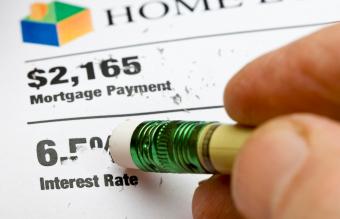
Accurate Libor rates forecasts are very difficult to find. Most financial institutions and information providers are unwilling to forecast Libor rates.
Market Sensitive
The Libor rate is determined by the British Bankers Association (BBA) as an average of what the major British banks would charge each other to borrow money. This bank-to-bank lending is called an "inter-bank" loan. The rates are determined for a variety of loan terms from an overnight loan up to longer terms such as ten year loans.
The British banks each determine their individual inter-bank rates based on their analysis of the following factors:
- London cash markets - The less cash that is available in the London financial market, the more demand there is for a loan. When there is more demand for a loan, the interest rate goes up. When there is more cash in the market and the loan demand goes down, the loan interest rates also go down.
- Individual bank lending policies - Each bank has policies regarding when they will lend money and when they will minimize the number of loans they make. These policies affect the interest rate they will charge. For example, the bank's policy might be to minimize the amount of loans made when the financial market is low in cash. They will usually charge a higher interest rate for these limited number of loans.
- Local interest rate policies - Banks will each have their own methods of determining the actual interest rate that they charge. Some banks may have a policy to set their interest rates so that they charge the lowest interest rates as compared to their competition. Other banks may have a policy to set their interest rates so that they are competitive with a specific competitor bank.
BBA Will Not Forecast
The BBA developed the Libor rate as a short-term interest rate. The longest term for which they are willing to determine a rate is a 12-month Libor rate. They will not provide Libor rate forecasts because they feel they cannot determine how each of the contributing banks might react in future markets. The individual policies of each the banks, combined with not knowing what the financial market might look like, makes accurate forecasting very difficult.
Use Libor Rates Forecasts with Caution
Some financial information providers will analyze the historical Libor rates and use those rates to forecast the future Libor rates. The providers compile their forecast by analyzing the actual Libor rates over a period of time, such as a year. They look at the ups and downs of the rates and smooth them into one line. The direction of this line determines a forecast of the Libor rates for the future. There is no way to evaluate whether these Libor rates forecasts will be accurate.
The longer the timeframe of the forecast, the greater the chance that the forecast is not accurate. For example, a forecast of the Libor rates in 13 months has a greater chance to be accurate than a forecast of the Libor rates in ten years.
More Resources on the Libor Rate
Additional information about the Libor rates is available in these LoveToKnow Mortgage articles:
- The definition of Libor
- Understanding the basic on Libor rates
- Where to find the current Libor rate
- How to find the history of the Libor index
- Where to find the historical Libor rates expressed in United States dollars
- Finding the historical Libor rates
- Understanding the Libor index
.







